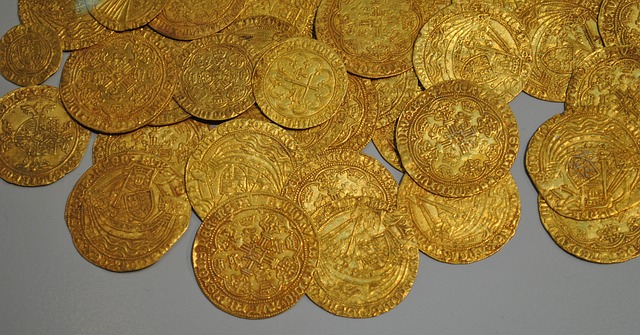Collecting Valuable Coins: A Guide to Rare Coin Investment and Worth
Collecting valuable coins isn't just a hobby — it can be a smart investment. From rare historical mints to error coins and limited editions, their value depends on condition, rarity, and demand. Learn how to spot coins that could be worth much more than face value.

What Makes a Coin Valuable?
The value of a coin is determined by several key factors. Rarity is perhaps the most crucial element—coins with limited mintage or those that have survived in small numbers tend to command higher prices. The condition of the coin, often graded on a scale from poor to mint state, significantly impacts its worth. Age can play a role, but it’s not always the deciding factor; some relatively recent coins can be extremely valuable due to errors or limited runs. Historical significance, such as coins minted during important events or reigns, can also drive up value. Lastly, demand from collectors influences price, with some series or types of coins being more sought after than others.
How to Identify Potentially Valuable Coins
Identifying valuable coins requires knowledge and attention to detail. Start by familiarizing yourself with coin dates, mint marks, and unique features of different series. Look for coins made of precious metals like gold or silver, as these often have inherent value beyond their numismatic worth. Pay attention to any errors or variations—misstrikes, double dies, or off-center strikes can significantly increase a coin’s value. Research is key; use reputable coin guides and price lists to stay informed about current market trends and values. Consider investing in a magnifying glass or loupe to examine coins closely for subtle details that could indicate rarity or authenticity.
What Are Some of the Most Valuable Coins?
Some coins have achieved legendary status among collectors due to their extreme rarity and historical significance. The 1794 Flowing Hair Silver Dollar, believed to be the first silver dollar struck by the U.S. Mint, sold for over $10 million in 2013. The 1933 Double Eagle, a $20 gold coin that was never officially released due to the U.S. abandoning the gold standard, is another highly coveted piece. More accessible yet still valuable coins include the 1909-S VDB Lincoln Cent, the 1916-D Mercury Dime, and the 1955 Double Die Lincoln Cent. Modern valuable coins often result from minting errors, such as the 1999-P Connecticut State Quarter with a misplaced die or the 2004-D Wisconsin State Quarter with an extra leaf.
How Much Can Valuable Coins Cost?
The value of rare coins can range from a few hundred dollars to millions, depending on their rarity and condition. To provide a clearer picture of potential costs, here’s a comparison of some notable valuable coins:
| Coin | Year | Estimated Value Range |
|---|---|---|
| 1794 Flowing Hair Silver Dollar | 1794 | $4,000,000 - $10,000,000+ |
| 1933 Double Eagle | 1933 | $7,500,000 - $20,000,000+ |
| 1804 Draped Bust Silver Dollar | 1804 | $3,000,000 - $7,500,000 |
| 1913 Liberty Head Nickel | 1913 | $3,000,000 - $5,000,000 |
| 1943 Copper Lincoln Cent | 1943 | $100,000 - $250,000 |
| 1955 Double Die Lincoln Cent | 1955 | $1,000 - $50,000 |
Prices, rates, or cost estimates mentioned in this article are based on the latest available information but may change over time. Independent research is advised before making financial decisions.
How to Determine the Worth of Your Coins
To assess the value of your coins, start by carefully examining them for key details such as date, mint mark, and condition. Use reputable coin grading guides to determine the approximate grade of your coins. Online price guides and auction results can provide current market values, but remember that these are often for coins in top condition. For more accurate appraisals, consider consulting a professional numismatist or attending coin shows where experts can evaluate your pieces. Keep in mind that the numismatic market can be volatile, and values may fluctuate based on collector demand and economic factors.
Is Coin Collecting a Good Investment?
Like any investment, coin collecting comes with both potential rewards and risks. On the positive side, rare coins can appreciate significantly in value over time, often outpacing inflation. They offer tangible assets that can be enjoyable to own and study. However, the coin market can be unpredictable, and not all coins will increase in value. Proper storage and handling are crucial to maintaining a coin’s condition and value. Additionally, selling coins may not always be quick or easy, depending on market conditions and buyer interest. For those considering coin collecting as an investment, it’s advisable to approach it with a long-term perspective, focus on quality over quantity, and continuously educate yourself about the market.
In conclusion, the world of valuable coins offers a fascinating blend of history, art, and potential financial reward. Whether you’re a seasoned numismatist or a curious newcomer, understanding the factors that contribute to a coin’s value can help you make informed decisions about collecting or investing. Remember that while some coins can indeed be worth far more than their face value, successful coin collecting requires patience, knowledge, and a genuine passion for the hobby.




